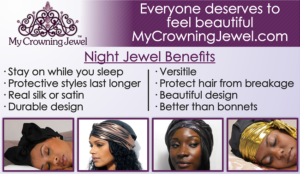How to Protect Your Hair While Sleeping
- Posted on 02 November, 2021
- Hair Knowledge
- By Emma & Stuart
Do you understand the importance of knowing how to protect your hair while sleeping? Night-time hair damage is caused by tossing and turning in your sleep, with your hair rubbing and tangling against your pillows constantly. And, if you sleep for an average of 8 hours a night, your hair goes through this for 1/3 of your life!
Mark our words: sleep is the silent assassin of your hair. However, don’t panic, there’s plenty of things you can do to protect your hair whilst sleeping. We’ve put together some key things to note and some really useful tips and tricks on how to protect your hair when you sleep.
How To Protect Hair During Sleep
Ditch your cotton pillowcase in favour of silk
If you wake up with frizzy or damaged hair, then chances are it’s your pillowcase’s fault. Cotton pillowcases absorb moisture, says celebrity stylist Jen Atkin, who recommends seeking alternatives if you want to keep your hair looking its best.
One option is getting yourself a pillowcase made of silk, which doesn’t absorb moisture and leaves your hair nourished rather than dry. Then when you wake up, you minimise the bedhead! The problem with silk pillowcases, though, is the cost. Silk doesn’t exactly come cheap, especially if you’re kitting out 3 or 4 pillows at a time.
Wear a sleeping cap, hair wrap or silk scarf
As a more efficient and inexpensive alternative to a silk pillowcase, we’d recommend getting yourself a specifically-made turban or sleeping cap for hair. Sleeping caps help prevent your hair tangling and can also be worn wigless to protect your scalp at night. Not only are sleeping caps soft and comfortable, but they are also breathable to ensure your head doesn’t overheat at night.
Plus, keeping your hair covered minimises friction between your hair and pillow, therefore reducing damage to your locks while you sleep. What’s more, these headwear accessories can add to your bedroom look!
Dry your hair (like you really, really care)
We can’t stress this one enough. We always suggest after washing your wig that you leave it to dry on a wig stand, and the same principle applies with natural hair too.
Sleeping with wet hair is another common reason for damaged or lost hair. Wet hair is susceptible to frizzing and breaking, so give yourself plenty of time between bath and bed for your hair to dry. Ideally, natural drying is preferable to a hairdryer – but your hair should be dry by the time it hits the pillow.
Is it better to sleep with your hair up or down? Up!
Although sleeping with your hair tied up can cause tension on the scalp, you can cause more damage to your hair when sleeping with it down, despite this seeming the more natural route. This is because having your hair loose can result in more tangles and breakages when subsequently trying to detangle in the morning. So, the consensus is that sleeping with your hair up is the way to go.
Say goodbye to your elastic hair ties
As mentioned above, tying your hair up at night is a controversial one. If you do tie your hair up at night, ditch elastic hair ties as these hair ties pull your hair tight, leading to damaged roots and breakages because of the pressure. As an alternative, we’d suggest swapping out your hair ties for soft scrunchies or hair wraps to relieve that pressure on your roots.
Use dry shampoo before bed
A quick spritz of dry shampoo before bed can absorb any grease or oil at your roots, refreshing your look overnight. You could sprinkle a pinch of baby powder or corn starch on your roots for the same effect in the absence of dry shampoo.
Practice some scalp self-care
A quick scalp massage before bed is a great way to practice self-care by replicating your own salon experience at home. Apply a small amount of pressure on the scalp with the fingertips, working in a small circular motion across your head to make sure you cover all areas.
Massaging the scalp has health benefits, too. According to some research, a scalp massage stimulates and stretches hair follicles to promote thicker hair growth and may dilate blood vessels under the skin to encourage faster hair growth. Plus, a head massage can improve blood flow to the brain, boost mental clarity, and the meditative experience is a real mood-buster.
We don’t blame you if you want to give it a go right now!
Brush your hair before bed
Giving your mane a good detangling before you go to bed is one of the easiest ways to protect your hair while you sleep. Brushing your hair detangles the strands and re-distributes your hair’s natural oils to make it smoother. Just a gentle brush will do so that you don’t cause any breakages. Brush enough to untangle your hair, but don’t go further than that – the ‘100 brushstrokes before bed’ is a debunked urban myth.
Remember, never brush your hair while wet – but if you’re following our tips, you won’t have wet hair before bed anyway!
Apply an overnight hair treatment
Using an overnight hair treatment is another self-care method that will help moisturise a dry scalp or dry hair, repair damaged strands, tame frizz or add some shine. Haircare products are designed to return your hair to its former glory.
Deep condition or use a hair serum
Using a deep conditioner or moisturiser keeps your hair hydrated while you sleep. We suggest working a bit of conditioner from root to tip, focusing on dryer areas, usually the ends. Then, pop your hair up in your sleep cap or hair wrap to secure it overnight before washing it out.
Tips for preserving your curls
When it comes to protecting curls at night, our top tip includes sleeping on your side or your stomach so that you don’t flatten or drag your hair down. Or, secure your hair in the ‘pineapple’ hairstyle – a curly girls’ dream. To achieve this, pile your curls on top of your head and secure them with a scrunchie and a butterfly clip if you have any shorter fringe pieces that don’t quite tie-up.
Keeping your hair straight overnight
The best way to protect straight hair overnight is not to use much heat when styling. If you do style your hair with heat, for example, using straighteners or a hairdryer, always use a heat-protective spray and style at low temperatures. Then, combine with the other methods we’ve listed and voila – no need to restyle in the morning!
Don’t go to bed in a dry room
Dry heat is a big no-no when it comes to protecting your hair while you sleep, especially if your hair is already dry-type. To combat this, try not to sleep with the heating on if you can – though we know this can be hard in the winter months!
Remove your hair extensions before you go to sleep
While clip-in hair extensions won’t damage your scalp while you sleep, the inevitable tossing and turning over the course of the night could leave you in a tangle – literally! So, save yourself the effort in the morning and take out your hair extensions before you go to bed.
Try one of these bedtime-approved hairstyles
Sleep in a Braid
Sleeping in a loose braid, secured with a scrunchie, is a popular way to protect your hair while you sleep, as it keeps your locks out of your face while you slumber. This flat hairstyle is super comfortable to sleep on, too, even for the lightest sleepers. A bonus of sleeping in a braid is waking up to gorgeous heat-free curls!
Sleep in a Bun
Putting your hair up into a loose bun with a gentle twist is a great way to protect your hair when you sleep. Create your bun high on your head so that it’s more comfortable when you sleep; this can also give you a gorgeous lift at the root. Plus, you can create a natural wavy look with the soft creases of your scrunchie tie!
A final note: Can I wear my wig whilst sleeping?
At Simply Wigs HQ, we’re often asked this question by our lovely wig wearing community, but our advice remains consistent. While it can be tempting to wear your wig to bed after a long day, we would advise against it. Sleeping in your wig can result in tangling and matting, which can damage your wig and reduce its lifespan. Luckily, there are plenty of alternatives available, which you can read about in our blog dedicated to answering the question can you sleep in a wig?
When we spend so much of our lives catching Z’s, knowing how to protect your hair when you sleep is important. Following our advice, you’ll be able to maintain your luscious locks with ease! If you have any other tips on how to protect hair during sleep, let us know in the comments. Or, if you’re a wig wearer and want to hear more about our wig care tips, check out our blog.




